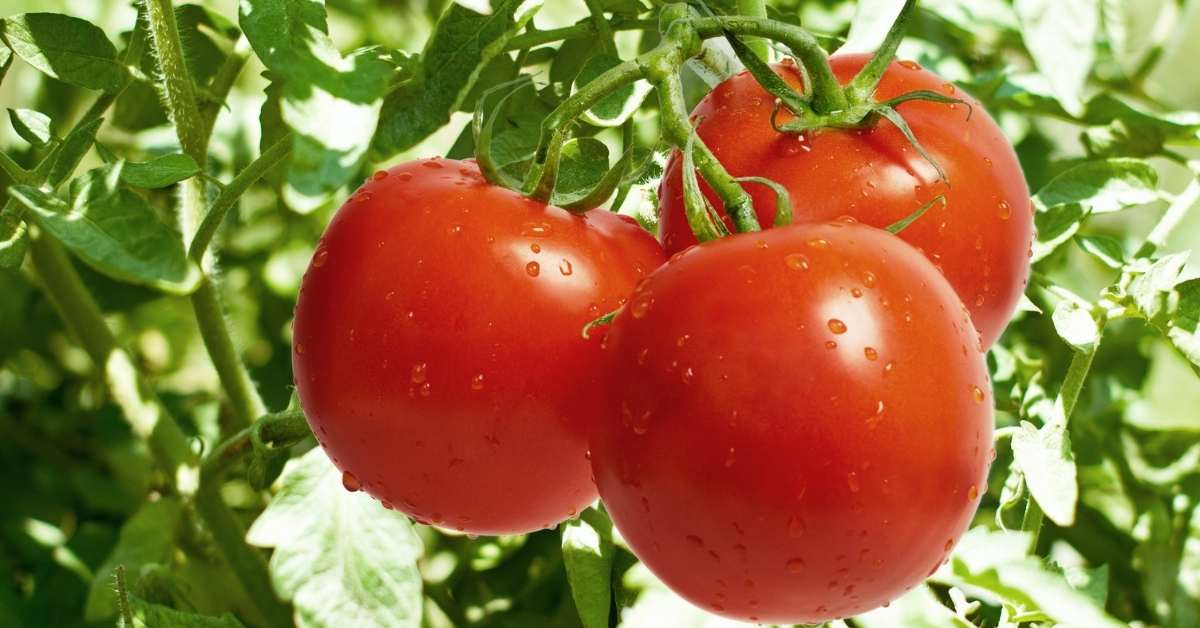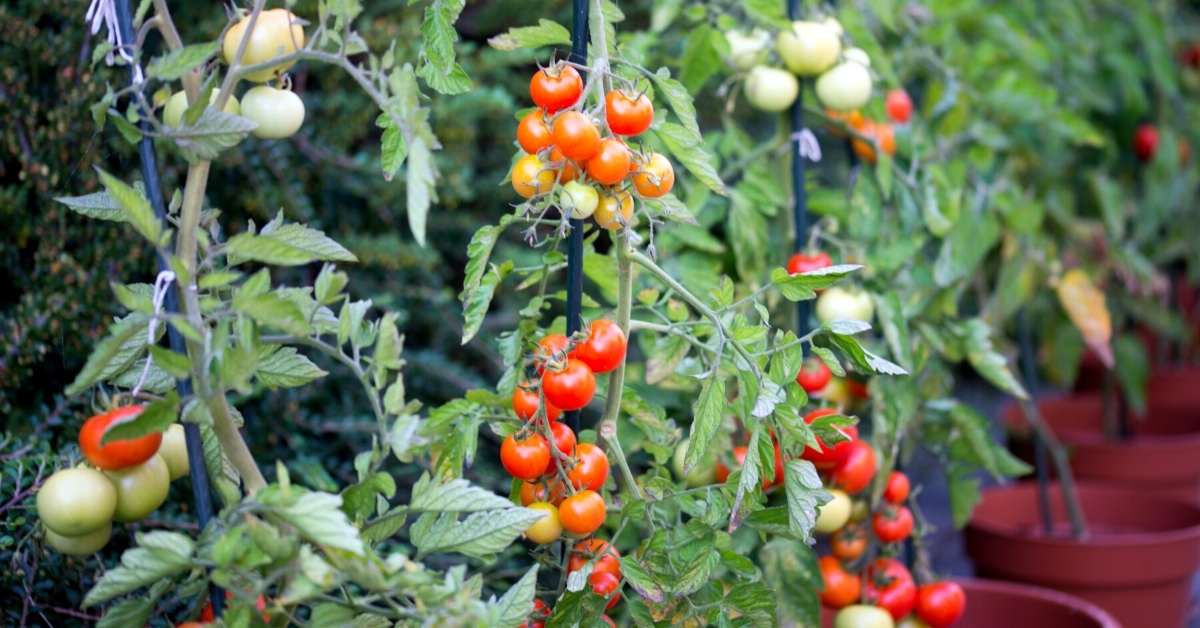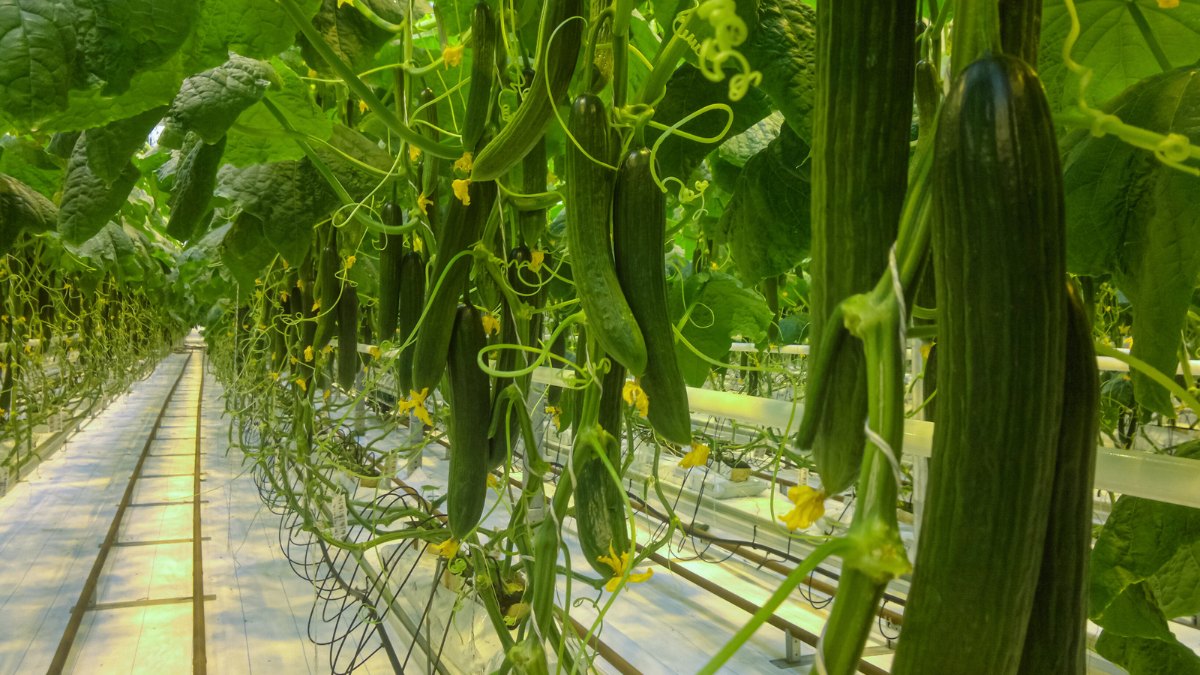As the weather gradually warms up, your enthusiasm for your small vegetable or fruit garden, or your efforts in planting vibrant flowers, grows stronger. You’re dedicated to nurturing your garden and eagerly anticipate the rewarding results of your hard work. With each passing day, the increasing temperatures fuel your excitement and strengthen your commitment to the growth and success of your garden.
However, with some of the diversities, these great expectations might fail, particularly with tomatoes. So, to prevent this failure, there are some steps you can follow, which we compiled here. Use baking soda around tomato plants and with many other things to get amazing results.
Baking soda for tomato plants
Baking soda is not only useful for enhancing the flavor and quality of tomatoes but also for preventing and treating some common diseases that affect tomato plants. Baking soda can help control fungal infections such as early blight, late blight, and leaf spots by creating an alkaline environment on the plant surface that inhibits fungal growth. To use baking soda as a fungicide, mix one teaspoon of baking soda with one quart of water and spray the solution on the affected plants every few days.
You can also add a few drops of liquid soap or vegetable oil to help the solution stick to the leaves. Baking soda can also help reduce blossom end rot, a condition caused by a calcium deficiency that results in black or brown spots on the bottom of the tomato fruits. To prevent blossom end rot, sprinkle some baking soda around the base of the tomato plants once a week. This will help increase the calcium uptake by the roots and improve the soil pH. Baking soda is a natural and inexpensive way to boost your tomato plants’ health and productivity.
Plant tomatoes horizontally on the ground!
An ingenious technique in tomato cultivation involves deviating from the conventional vertical growth pattern and instead opting to plant them horizontally. This unconventional approach offers a multitude of benefits for the plant’s development, primarily fostering the growth of a more resilient and expansive root system.
By laying the tomato plant horizontally on the ground, it is provided with ample opportunities to establish an extensive network of roots, enabling enhanced nutrient absorption and overall plant vigor. This innovative method unlocks the potential for stronger and healthier tomato plants, thereby maximizing their productivity and yield.

Sprinkle baking soda around tomato plants on the ground
Baking soda for tomato plants is kind of a secret weapon to ensure that tomatoes grow well! When the plant has grown about 2.5 cm, sprinkle 4 teaspoons of bicarbonate around the plants, but be careful not to sprinkle on the plant. The process can be repeated for some time before the harvest.
Baking soda will help in reducing the acidity of the soil, and the tomatoes will be tastier.
Other benefits of using baking soda with tomato plants
You might like to read this: 10 Best Pet-Friendly Gardening Tips
Eliminate cabbage worms
To effectively eliminate pesky cabbage worms that may be damaging your vegetables, you can employ a natural solution using bicarbonate soda. Simply combine equal parts of bicarbonate soda and ordinary flour. Once mixed, sprinkle this combination directly onto the affected plants where the cabbage worms are present. This natural remedy serves to deter and eliminate the cabbage worms, helping to protect your valuable vegetables from further damage.
Control and Get rid of Powdery mildew
To effectively control and eliminate powdery mildew, you can create a homemade solution by combining 1 tablespoon of baking soda, 1 tablespoon of vegetable oil, 1 tablespoon of liquid dishwashing detergent, and 4 liters of water in a mixing bowl. Once thoroughly mixed, pour the solution into a spray bottle, filling it halfway. It is recommended to spray this mixture onto the affected plants once a week. However, it is essential to exercise caution and monitor for any signs of plant sensitivity or fire risk, as certain plant species may be more susceptible to adverse effects.

Defer Crabgrass
Crabgrass is one of the worst lawn weeds on the planet, and it should be eradicated as soon as possible. Spray crabgrass with water and then sprinkle bicarb soda on it to destroy it. In a few days, crabgrass will be dead. However, avoid sprinkling bicarb soda on any other plants or grass.
Control Weeds
To effectively control weeds, a simple yet effective method is to generously apply baking soda into the crevices of pavements or garden stones. The bicarb soda acts as a deterrent, preventing weed growth and killing existing small weeds. By regularly implementing this practice once or twice a month, you discourage the emergence of new weeds, thereby maintaining a cleaner and more weed-free environment.
Get rid of Slugs
To effectively eliminate slugs in your garden, a simple solution involves directly sprinkling bicarbonate soda onto the slugs. This method works by drying out the slugs upon contact. By applying the bicarbonate soda directly onto the slugs, you can successfully address the slug issue and minimize their presence in your garden.
Make an organic pesticide that is both safe and effective
For a safe and effective organic pesticide, you can create a non-toxic insecticide that targets harmful insects like aphids while being environmentally friendly. To prepare this solution, combine one tablespoon of baking soda, 12 tablespoons of oil (such as vegetable or neem oil), and two liters of water in a mixing bowl. Thoroughly mix the ingredients. Using a spray bottle, apply the solution to the affected plants every few days until the pests are eradicated. This natural pesticide offers an eco-friendly alternative for pest control, allowing you to protect your plants without causing harm to the environment.
Keep flowers in good condition.
Fill the vase with water and one teaspoon of bicarb soda to extend the life of a fresh arrangement of flowers.
Treat the fungus that causes black spots.
Baking soda works as a natural fungicide. If you’ve ever had a tomato garden devastated by tomato blight, powdery mildew, or other fungal diseases, baking soda will bring you some relief.
Baking soda acts by upsetting ion balances inside fungal structures, allowing them to be kept under check.
Bicarbonate is best used as a preventive rather than a therapy since it is only helpful in limiting the spread of existing infection to healthy, uninfected plant tissues when used as a treatment.
Baking soda is also thought to help inhibit fungal diseases from blooming and producing spores, limiting how far the infection spreads throughout the garden.
This may help preserve other plants from the same illness, leaving the garden in better condition.
Combine four teaspoons of bicarb soda and four liters of water in a mixing bowl. At the first indication of the illness, spray on affected flowers.
How to Treat Tomato Blight with Baking Soda?
Tomato blight is a fungal disease that affects tomato plants and causes brown spots, wilting, and rotting of the leaves, stems, and fruits. One way to treat tomato blight naturally is to use baking soda, which can help kill the fungus and prevent its spread.
To use baking soda for tomato blight, you will need to make a spray solution by mixing 1 tablespoon of baking soda, 1 teaspoon of vegetable oil, a nd 1 gallon of water. Then, spray the solution on the affected parts of the tomato plants every 7 to 10 days until the disease is gone. You should also remove any infected plant parts and dispose of them properly to avoid contaminating other plants. Baking soda can help save your tomato plants from blight and improve their health and productivity.
How to Use Baking Soda to Control Cabbage Worms
Cabbage worms are green caterpillars that feed on cabbage, kale, broccoli, and other plants in the brassica family. They can cause serious damage to the leaves and heads of these crops, reducing their quality and yield. One way to get rid of cabbage worms naturally is to use baking soda, which can kill the caterpillars by dehydrating them or disrupting their digestive system.
To use baking soda for cabbage worms, you can make a spray solution by mixing 1 tablespoon of baking soda, 1 teaspoon of vegetable oil, and 1 gallon of water. Then, spray the solution on the infested plants every 7 to 10 days until the worms are gone. You can also dust your plants with equal parts baking soda and flour, which will stick to the caterpillars and kill them. However, be careful not to use too much baking soda, as it may affect the soil pH or harm beneficial insects. Baking soda is a cheap and effective way to control cabbage worms and protect your brassica plants from these pests.
How to get rid of the birds that are eating your tomatoes?
Even the birds in our gardens know how tasty the tomatoes are. To prevent them from eating tomatoes, leave a bowl of water next to the plant itself.
Plant overripe tomato again
Another great idea is to plant the overripe tomato.
Cut the tomatoes into slices and put them in the soil in a pot. Then add soil on top. It will take sporadically about 1-2 weeks to grow back, and then you can transplant the new plants.
Conclusion
Tomatoes are one of the most popular and rewarding crops to grow in your garden. They offer a variety of benefits for your health, taste, and satisfaction. However, growing tomatoes also comes with some challenges and problems that can affect their growth and quality. Fortunately, some simple and natural solutions can help you overcome these issues and enjoy a bountiful harvest of delicious tomatoes.
One of these solutions is using baking soda around tomato plants. Baking soda can help improve the flavor, texture, and appearance of your tomatoes by reducing the soil acidity and increasing calcium availability. It can also help prevent and treat some common fungal diseases that can ruin your tomato plants by creating an alkaline barrier on the plant’s surface. Baking soda is a cheap, safe, and effective way to boost your tomato plants’ performance and yield. Try it today and see the amazing results for yourself!
FAQ
How much baking soda per tomato plant?
To use baking soda for tomato plants, you can sprinkle some baking soda around the base of the tomato plants once a week. This will help reduce blossom end rot, a condition caused by a calcium deficiency that results in black or brown spots on the bottom of the tomato fruits. The amount of baking soda per tomato plant depends on the size of the plant and the soil acidity, but a general recommendation is to use about 4 teaspoons of baking soda per plant. However, be careful not to sprinkle baking soda on the plant itself, as it may cause leaf burn or damage. Baking soda can help improve the flavor and quality of your tomatoes by reducing the soil acidity and increasing calcium availability.
When to put baking soda on tomato plants?
The best time to put baking soda on tomato plants is when they start to flower and set fruit. This is because baking soda can help prevent blossom end rot, a common problem that affects tomato fruits during this stage. Baking soda can also help improve the flavor and sweetness of the tomatoes by reducing the soil acidity. However, you should not apply baking soda too early or too late in the season, as it may interfere with the plant’s growth or nutrient uptake. You should also avoid applying baking soda during rainy or humid weather, as it may wash off or cause fungal diseases.
Is it safe to put baking soda on tomato plants?
Baking soda is generally safe to put on tomato plants, as long as you use it correctly and moderately. Baking soda can help prevent or treat some common tomato problems, such as blossom end rot, blight, and low acidity. However, baking soda can also have some negative effects on tomato plants if you use too much or too often. For example, baking soda can cause leaf burn, nutrient imbalance, soil alkalinity, or reduced fruit yield. Therefore, you should always follow the recommended dosage and frequency of baking soda application for tomato plants, and monitor their condition closely. You should also avoid putting baking soda directly on the plant itself, and only sprinkle it around the base of the plant or spray it on the affected parts.


